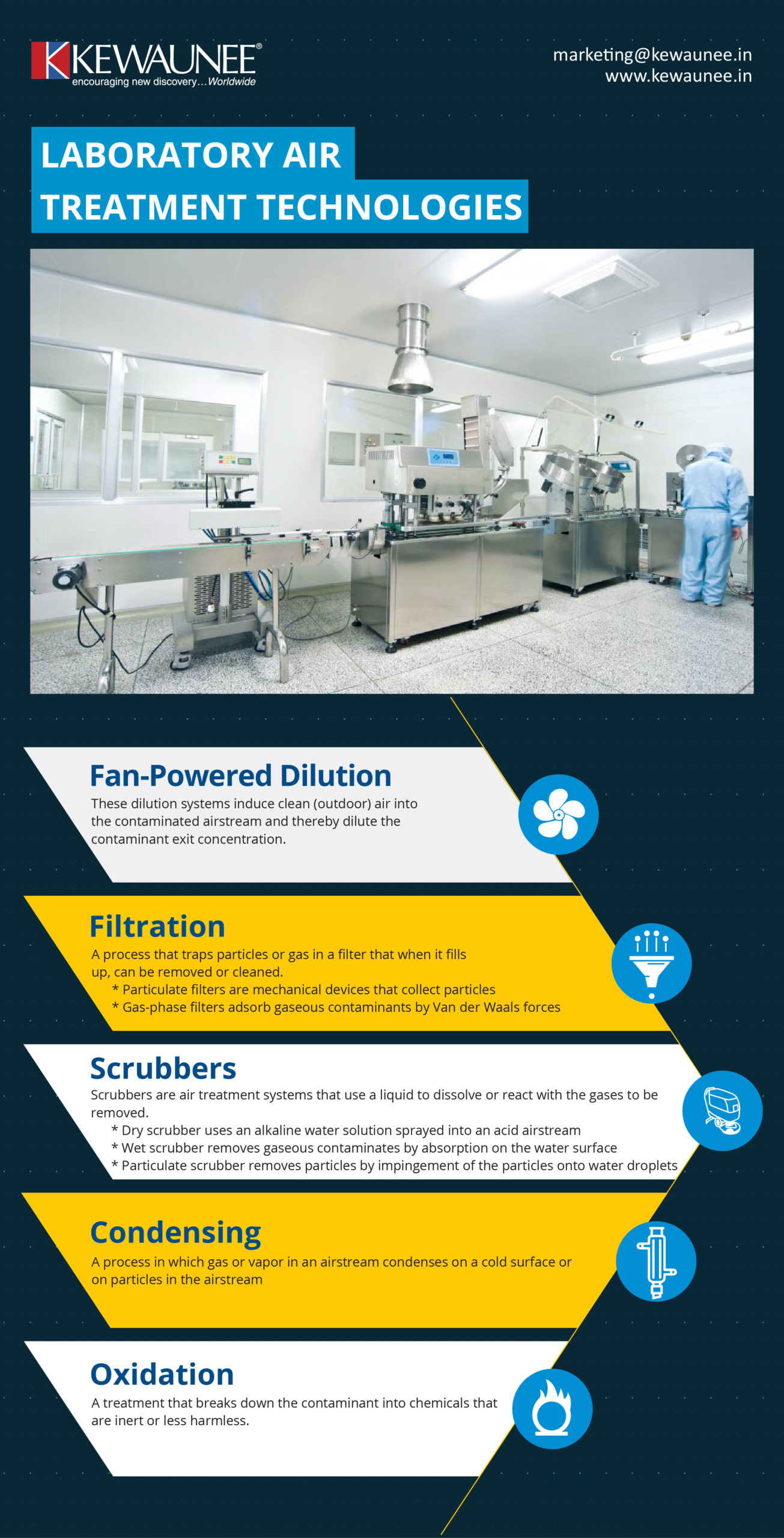Laboratory Air Treatment Technologies
A wide variety of pollutants lead to indoor air pollution. The pollutants may pose a threat to human health and the environment. In the context of laboratories, the indoor air pollution gains prominence due to the hazardous nature of the work carried out in the labs.
In the previous blog, we looked at the key design parameters for the laboratory supply and exhaust ducts. In this blog, let’s explore the various air treatment technologies available for consideration to make the laboratories a safe working environment.
Depending on the contaminants in the laboratory, the air treatment technologies required may change. Broadly, the technologies available to achieve acceptable levels of pollutants include fan-powered dilution, filtration, scrubbing, condensing, and oxidation.
| AIR TREATMENT TECHNOLOGY | DESCRIPTION |
|---|---|
| Fan-Powered Dilution | These dilution systems induce clean (outdoor) air into the contaminated airstream and thereby dilute the contaminant exit concentration. |
| Filtration | A process that traps particles or gas in a filter that when it fills
up, can be removed or cleaned.
|
| Scrubbers | Scrubbers are air treatment systems that use a liquid to dissolve or react with the gases to be removed.
|
| Condensing | A process in which gas or vapor in an airstream condenses on a cold
surface or on particles in the airstream. |
| Oxidation | A treatment that breaks down the contaminant into chemicals that
are inert or less harmless. |
Reference: ASHRAE
Comments are closed.











